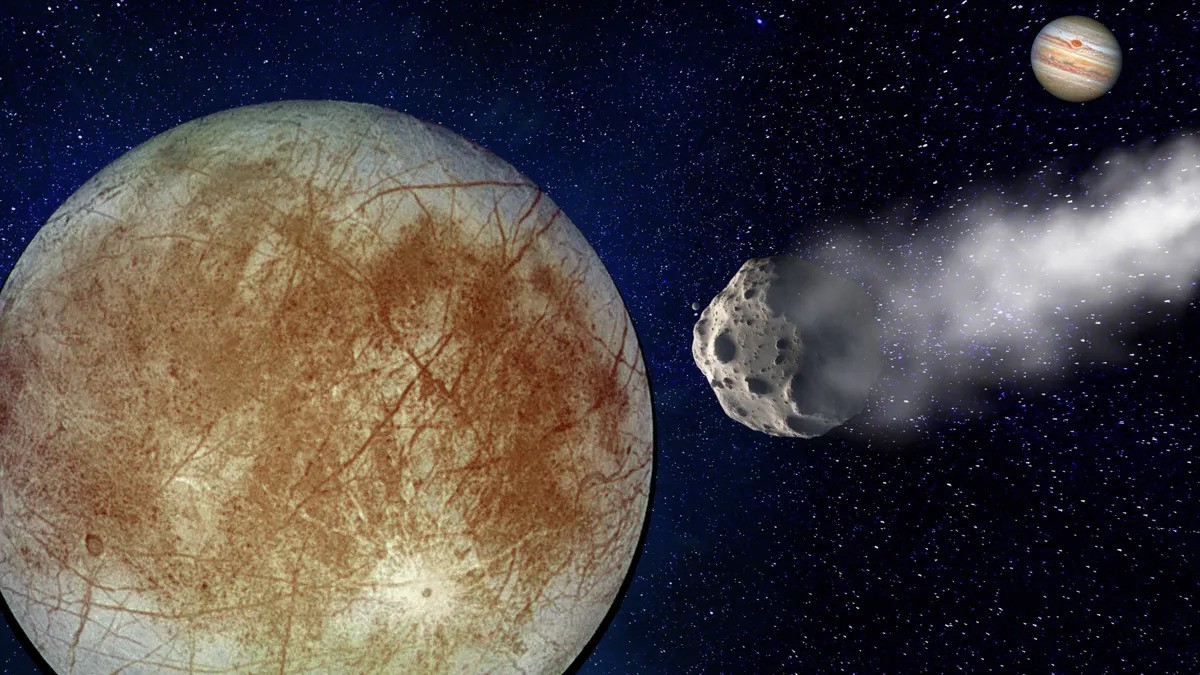Despite the constant smoothing of the surface, Jupiter’s moon Europa bears numerous traces of collisions with comets and asteroids. Recently, thanks to the study of craters, scientists could estimate the thickness of the icy crust of this body.

Impact craters on Europa
Jupiter’s moon Europa has long been considered one of the best places in the Solar System to search for evidence of life beyond Earth. This object with a diameter of 3,100 km contains oceans of salt water, which are two to three times the volume of all the seas on our planet combined.
However, these oceans are hidden under the icy crust of Europa, and such an aquatic environment is a good place for the origin of life. However, its actual presence and shape strongly depend on the thickness of the icy shell of this moon. And it is precisely this that scientists have not yet been able to determine.
But now the planetary science team may have some clues as to the final meaning. Having studied the large craters on Europa, which were formed as a result of its bombardment by asteroids and comets, the researchers used these observations to determine that the thickness of Europa’s shell was about 20 km. And this shell, they say, probably floats in an ocean 60 to 150 km deep, located around the rocky core of the moon.
According to scientists, understanding this parameter is very important to find out which energy sources life uses: is photosynthesis present there or does it rely entirely on underwater geothermal sources.
Photosynthesis on the Jupiter’s moon
Most likely, life on Europa exists solely through chemical reactions, and not photosynthesis, which is common for terrestrial life. This is because Europa is constantly exposed to Jupiter’s radiation, which means that organisms cannot exist on its surface.
Any life on Europa would have to exist under the ice, where there is no sunlight. And sunlight is necessary for photosynthesis. For this biochemical process to take place, the ice layer must be thick enough to protect simple life forms such as microbes from radiation, but at the same time thin enough that the radiation can provide simple life with energy.
Impact Crater Research
A team of scientists estimated the thickness of Europa’s ice shell by studying observations made by the Galileo spacecraft in 1998. The scientists then modeled the craters using a combination of physical characteristics and surface properties that could create the craters. Due to this, the thickness of the crust was established.
The obtained result does not provide an unambiguous answer to the questions that scientists are interested in. They are sure that in order to understand the full picture, it is still necessary to establish how the ice crust and water in the ocean interact with the rock core.
According to www.space.com
Follow us on Twitter to get the most interesting space news in time
https://twitter.comne/ust_magazine


